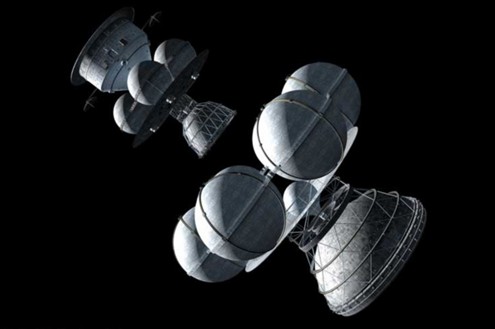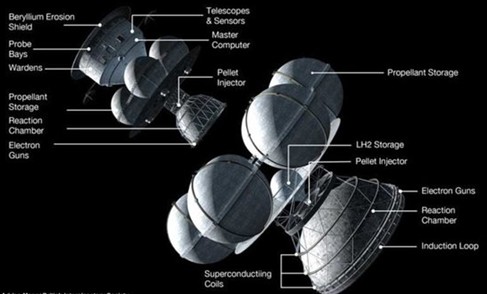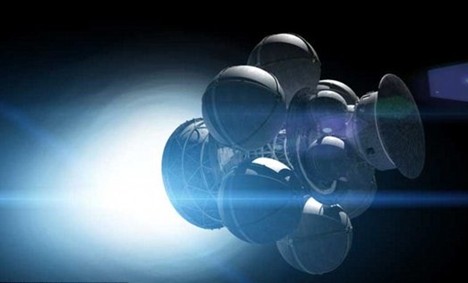
The 100-year Starship project that plans to transport humans
usinfo | 2013-07-17 14:51
A dramatic plan to transport humans beyond the solar system within 100 years today received the backing of former President Bill Clinton.
The 100-year Starship project, which was set up with US military seed funding, plans to develop huge 'starships' to send humans far into space.
Next week it will meet to discuss the plans and begin the huge task.

Project Daedalus, the first serious attempt to design a ship capable of travelling to the nearest stars.
Weighing 50,000 tonnes, powered by nuclear fusion, travelling at 12% of the speed of light, the journey time would be close to 50 years.
Weighing 50,000 tonnes, powered by nuclear fusion, travelling at 12% of the speed of light, the journey time would be close to 50 years.
It has already received large amounts of funding, and former President Bill Clinton has even stepped in to serve as the symposium's Honorary Chair.
In a statement, Clinton said: 'This important effort helps advance the knowledge and technologies required to explore space, all while generating the necessary tools that enhance our quality of life on earth.'
The astronuat who became the first black woman in space in 1992 has been chosen to skipper the '100 Year Starship' project.
Mae Jemison will lead the project to explore what it would take for a multigenerational mission beyond the solar system.
'The 100 Year Starship will make the capability of human travel beyond our solar system to another star a reality over the next 100 years,' she said.

The massive craft needed to escape our solar system next to St Pauls cathedral
'We will embark on a journey across time and space.
'If my language is dramatic, it is because this project is monumental.
And our team is both invigorated and sobered by the confidence DARPA has in us to make interstellar flight a reality.'
The project began with an award by the Defense Advanced Research Projects Agency of a $500,000 contract to study what is needed for long term projects such as interstellar space missions.
The group has teamed with Icarus Interstellar and the Foundation for Enterprise Development.
Adam Crowl, director of Icarus Interstellar, said: 'Project Icarus will be producing designs and doing basic research with the common goal of building the technical foundation required for eventual successful interstellar flight.'
However, the team has not underestimated the task.
It has already produced a list of what needs to be done.
'A venture to the stars will require the creation of revolutionary energy generation, storage and control systems, advanced propulsion systems, radical advancements in closed-loop, life-support systems, and new insights into human development, health, behaviour and training, as well as advances in robotics, automation, intelligent systems, and manufacturing techniques,' it says on its website.
'Programs to establish a human presence on the moon, Mars, or elsewhere in our solar system will be stepping-stones to the stars.'

The 1970s project planned an entire mission, and found a two stage spacecraft was the best option.

Weighing 50,000 tonnes and powered by nuclear fusion the journey time would be close to 50 years.

The 1970s plans could now be re-examined thanks to the 100 year starship project
Share this page



















